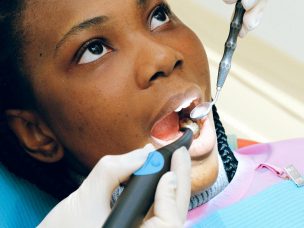Delve into the complexities of atopic dermatitis and allergies, learn about the atopic march, and understand the importance of managing both conditions effectively. Armed with this knowledge, you’ll be better prepared to work with healthcare professionals in developing personalized treatment plans to alleviate symptoms and improve your quality of life.
Atopic dermatitis (AD), also known as atopic eczema, is a common chronic inflammatory skin disease that affects up to 20% of children and up to 3% of adults, making it one of the most prevalent skin conditions [1]. This condition can cause dry, itchy, and red skin that may form into scaly patches or bumps. The exact cause of AD is unknown, but it is often linked to allergies and other atopic conditions. Understanding the connection between AD and allergies is important for effective management and treatment of both conditions.
Understanding Atopic Dermatitis
Atopic dermatitis is a complex condition that results from a combination of genetic, environmental, and immune factors. It’s believed that a defect in the skin’s barrier function allows allergens and other irritants to penetrate the skin, triggering an immune response that leads to inflammation and itching. Common triggers of AD may include stress, dry air, heat, sweating, and exposure to allergens.
Understanding Allergies
Allergies occur when the immune system overreacts to a substance that is normally harmless, such as pollen, dust mites, or certain foods. Symptoms of skin allergies may include redness, itching, and rashes.
The Link Between Atopic Dermatitis and Allergies
Atopic dermatitis and allergies are often related and may occur together. The progression of allergic diseases over the course of infancy and childhood is known as the atopic march [2]. Research shows that AD is often the first step in the atopic march, followed by allergic rhinitis (hay fever), asthma, and other allergic conditions.
Specific allergies may also be linked to AD. For example, food allergies, especially to eggs, milk, and peanuts, are more common in children with AD. Environmental allergens, such as pollen or dust mites, may also trigger AD symptoms. It’s important to note that, while allergies may worsen symptoms, they are not the primary cause of atopic dermatitis.
Managing Atopic Dermatitis and Allergies
Effective management of AD and allergies requires a comprehensive approach that addresses both the physical and emotional aspects of the conditions. Working with a healthcare provider is key for creating a personalized treatment plan that may include avoiding triggers, taking medications, and practicing good skin care.
In some cases, immunotherapy (allergy shots) may be recommended to treat both allergies and atopic dermatitis [3]. Immunotherapy involves gradually exposing the body to small amounts of allergens over time, which can desensitize the immune system and reduce allergic reactions.
Summing It Up
Atopic dermatitis and allergies are often linked and may occur together in the same person. Understanding the connection between these conditions is important for developing an effective treatment plan. By working closely with a healthcare provider and taking steps to manage symptoms, those with AD and allergies can lead healthy, comfortable lives.
References:
- Nutten, S. (2015, April 24). Atopic dermatitis: global epidemiology and risk factors. Annals of Nutrition and Metabolism. Retrieved March 23, 2023, from https://www.karger.com/Article/FullText/370220
- Hill DA, Spergel JM. The atopic march: Critical evidence and clinical relevance. Ann Allergy Asthma Immunol. 2018 Feb;120(2):131-137. doi: 10.1016/j.anai.2017.10.037. Erratum in: Ann Allergy Asthma Immunol. 2018 Mar 9;: PMID: 29413336; PMCID: PMC5806141.
- Allergic March. Allergy & Asthma Network. Retrieved March 23, 2023, from https://allergyasthmanetwork.org/health-a-z/allergic-march/









